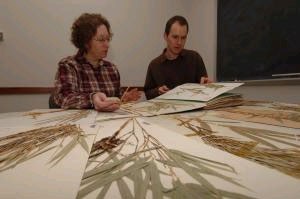Botanists have discovered a previously unknown species of North American bamboo in the hills of Appalachia. It is the third known species of bamboo in the United States, but the first “new” species in more than 200 years. The species is named Arundinaria appalachiana.
Globally there are 1,400 known species of bamboo, of which 900 are found in the tropics. The two other U.S. species, River cane and Switch cane, are widely distributed.
“Most people have no idea that we have native bamboo in the U.S.,” said Lynn Clark, the Iowa State professor of ecology, evolution and organismal biology who helped described the species. “But it has been a very important plant ecologically. And there’s recent interest in using it for re-vegetation projects because it’s native and was used for habitat by so many different animals, especially birds.”

ISU botanists Lynn Clark and Jimmy Triplett study bamboo diversity and evolution. They first heard about “hill cane” from University of North Carolina botanist Alan Weakley. As soon as they saw it, they knew it was different. (Credit: Photo by Iowa State University). |
In total Clark has discovered 75 species of bamboo, mostly from Central and South America.
“It’s so exciting to find a new species in our own backyard!” she said.
Jimmy Triplett, an Iowa State Ph.D. student, and Alan Weakley, a botanist at the University of North Carolina, contributed to the effort. It was Weakley who first spotted the species in the Appalachians.